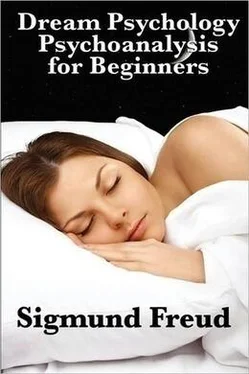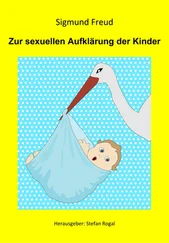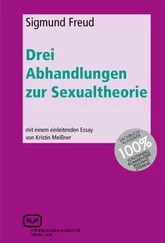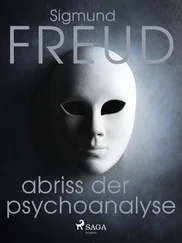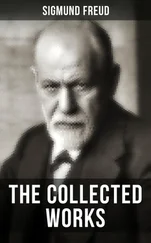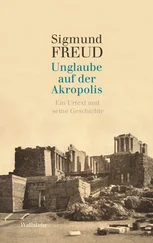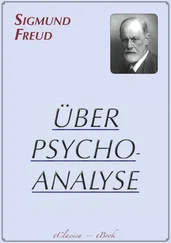It will hardly be worth while to take up the historical significance of dreams as a special subject. Where, for instance, a chieftain has been urged through a dream to engage in a bold undertaking the success of which has had the effect of changing history, a new problem results only so long as the dream, regarded as a strange power, is contrasted with other more familiar psychic forces; the problem, however, disappears when we regard the dream as a form of expression for feelings which are burdened with resistance during the day and which can receive reinforcements at night from deep emotional sources. But the great respect shown by the ancients for the dream is based on a correct psychological surmise. It is a homage paid to the unsubdued and indestructible in the human mind, and to the demoniacal which furnishes the dream–wish and which we find again in our unconscious.
Not inadvisedly do I use the expression "in our unconscious," for what we so designate does not coincide with the unconscious of the philosophers, nor with the unconscious of Lipps. In the latter uses it is intended to designate only the opposite of conscious. That there are also unconscious psychic processes beside the conscious ones is the hotly contested and energetically defended issue. Lipps gives us the more far–reaching theory that everything psychic exists as unconscious, but that some of it may exist also as conscious. But it was not to prove this theory that we have adduced the phenomena of the dream and of the hysterical symptom formation; the observation of normal life alone suffices to establish its correctness beyond any doubt. The new fact that we have learned from the analysis of the psychopathological formations, and indeed from their first member, viz. dreams, is that the unconscious—hence the psychic—occurs as a function of two separate systems and that it occurs as such even in normal psychic life. Consequently there are two kinds of unconscious, which we do not as yet find distinguished by the psychologists. Both are unconscious in the psychological sense; but in our sense the first, which we call Unc., is likewise incapable of consciousness, whereas the second we term "Forec." because its emotions, after the observance of certain rules, can reach consciousness, perhaps not before they have again undergone censorship, but still regardless of the Unc. system. The fact that in order to attain consciousness the emotions must traverse an unalterable series of events or succession of instances, as is betrayed through their alteration by the censor, has helped us to draw a comparison from spatiality. We described the relations of the two systems to each other and to consciousness by saying that the system Forec. is like a screen between the system Unc. and consciousness. The system Forec. not only bars access to consciousness, but also controls the entrance to voluntary motility and is capable of sending out a sum of mobile energy, a portion of which is familiar to us as attention.
We must also steer clear of the distinctions superconscious and subconscious which have found so much favor in the more recent literature on the psychoneuroses, for just such a distinction seems to emphasize the equivalence of the psychic and the conscious.
What part now remains in our description of the once all–powerful and all–overshadowing consciousness? None other than that of a sensory organ for the perception of psychic qualities. According to the fundamental idea of schematic undertaking we can conceive the conscious perception only as the particular activity of an independent system for which the abbreviated designation "Cons." commends itself. This system we conceive to be similar in its mechanical characteristics to the perception system P, hence excitable by qualities and incapable of retaining the trace of changes, i.e. it is devoid of memory. The psychic apparatus which, with the sensory organs of the P–system, is turned to the outer world, is itself the outer world for the sensory organ of Cons.; the teleological justification of which rests on this relationship. We are here once more confronted with the principle of the succession of instances which seems to dominate the structure of the apparatus. The material under excitement flows to the Cons, sensory organ from two sides, firstly from the P–system whose excitement, qualitatively determined, probably experiences a new elaboration until it comes to conscious perception; and, secondly, from the interior of the apparatus itself, the quantitative processes of which are perceived as a qualitative series of pleasure and pain as soon as they have undergone certain changes.
The philosophers, who have learned that correct and highly complicated thought structures are possible even without the coöperation of consciousness, have found it difficult to attribute any function to consciousness; it has appeared to them a superfluous mirroring of the perfected psychic process. The analogy of our Cons. system with the systems of perception relieves us of this embarrassment. We see that perception through our sensory organs results in directing the occupation of attention to those paths on which the incoming sensory excitement is diffused; the qualitative excitement of the P–system serves the mobile quantity of the psychic apparatus as a regulator for its discharge. We may claim the same function for the overlying sensory organ of the Cons. system. By assuming new qualities, it furnishes a new contribution toward the guidance and suitable distribution of the mobile occupation quantities. By means of the perceptions of pleasure and pain, it influences the course of the occupations within the psychic apparatus, which normally operates unconsciously and through the displacement of quantities. It is probable that the principle of pain first regulates the displacements of occupation automatically, but it is quite possible that the consciousness of these qualities adds a second and more subtle regulation which may even oppose the first and perfect the working capacity of the apparatus by placing it in a position contrary to its original design for occupying and developing even that which is connected with the liberation of pain. We learn from neuropsychology that an important part in the functional activity of the apparatus is attributed to such regulations through the qualitative excitation of the sensory organs. The automatic control of the primary principle of pain and the restriction of mental capacity connected with it are broken by the sensible regulations, which in their turn are again automatisms. We learn that the repression which, though originally expedient, terminates nevertheless in a harmful rejection of inhibition and of psychic domination, is so much more easily accomplished with reminiscences than with perceptions, because in the former there is no increase in occupation through the excitement of the psychic sensory organs. When an idea to be rejected has once failed to become conscious because it has succumbed to repression, it can be repressed on other occasions only because it has been withdrawn from conscious perception on other grounds. These are hints employed by therapy in order to bring about a retrogression of accomplished repressions.
The value of the over–occupation which is produced by the regulating influence of the Cons. sensory organ on the mobile quantity, is demonstrated in the teleological connection by nothing more clearly than by the creation of a new series of qualities and consequently a new regulation which constitutes the precedence of man over the animals. For the mental processes are in themselves devoid of quality except for the excitements of pleasure and pain accompanying them, which, as we know, are to be held in check as possible disturbances of thought. In order to endow them with a quality, they are associated in man with verbal memories, the qualitative remnants of which suffice to draw upon them the attention of consciousness which in turn endows thought with a new mobile energy.
Читать дальше
